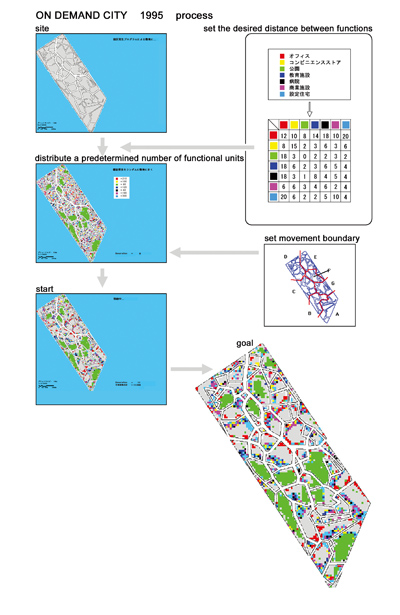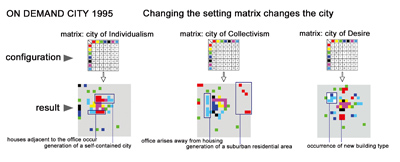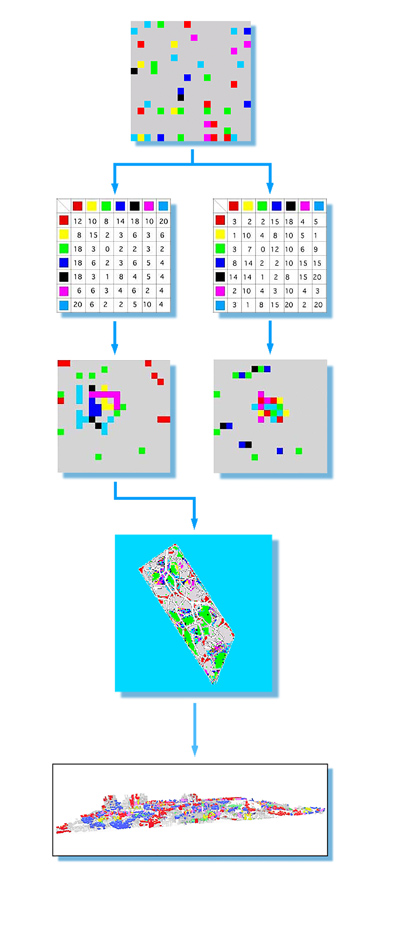Gen 2 INDUCTION DESIGN series
ON DEMAND CITY 1995



This is a program for creating a town in which necessary things are located in the necessary places.
What geographical relationships should there be, for example among schools, houses, convenience stores, game centers, and hospitals?
Is it possible to obtain an optimal location for the different functions within the city?
How are the functions of institutions required by a city related to one another?
The locations of such functions may seem to be governed by market principles, but in actuality the locations are largely determined by early-phase zoning.
It is rare that a traditional residential district suddenly turns into an amusement quarter. If the constraints are removed and institutions rearranged faithfully according to their functional relations, what pattern of locations would emerge?
The project here deals with this theme. Optimal mutual distances among functional units are first set.
A program for assessing the locations is prepared in accordance with that matrix. Under initial conditions many functional units are arranged at random throughout the city. The units are then moved little by little and new assessments made.
Thus the arrangement is gradually changed in pursuit of the highest scores If one element moves, it changes its distance from other elements.
And so results are not always the same. Relations among elements become intertwined like tangled threads.
What works favorably for one element may cause trouble for other elements.
Simulation offers a glimpse of what that complex situation will lead to.
One result may be that houses, which are not supposed to get close to one another in initial setting, begin to cluster to produce a collective housing district.
Another result may be the emergence of a center in which many functions are concentrated.
Demands based on whim do not necessarily produce a townscape shaped by whim.
Partly because elements are large in number and partly because they are intricately intertwined, a simple initial setting can describe diverse patterns.
The result is a visualization of the dynamics of "demand."
The demands of the city may emerge in their most candid form for the first time in the "on-demand city."

